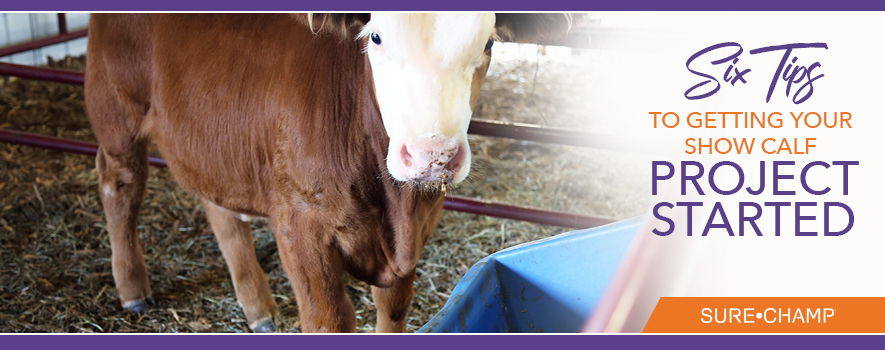
You’ve searched high and low for your ideal show calf project, and finally found “the one.” Now, you’re ready to bring your calf to your barn and get it on feed. But, you aren’t really sure where to begin. Jessie Judge, Marketing Brand Coordinator for BioZyme® Inc., who’s shown cattle throughout the Western U.S., offers six tips to getting your new cattle project acclimated.
- Ask lots of questions. Before you bring your calf home from the breeder or seller, be sure to ask him or her a lot of questions. Find out what kind of feeding program the calf was on. Is the calf 100% halter broke or has it never had a halter on it? Find out if it has been vaccinated and if so, what vaccination protocol was used. Does the calf have a daily routine or is it content to graze grass with its pen mate?
- Be patient. Judge said, “patience is key.” Although, you might be anxious to jump in with both feet, remember, anything worth doing is worth doing right the first time. Take your time; go slow; and follow a process to make sure your calf is eating, growing and getting calmed down before any serious halter breaking takes place.
- Get your calf used to its environment. Judge recommends getting the calf home and turning it out in a pen by itself, but still where it can see people and other cattle. She said keeping it in a pen by itself will help keep that animal and others safe by preventing fights. Also, make sure if it is still hot, the animal has shade or if inside, it still has fans keeping air moving around it.
- Introduce Feed & Water. One of the questions you should have asked the seller, is about the feeding program your calf was previously on. Make the transition as smooth as possible to your feed of choice. Start by feeding the original feed, and gradually mixing your feed in by small increments to avoid digestive upsets or imbalances. After a while, increase your feed and decrease the amount of original feed. Make sure your calf has plenty of fresh water and hay. When you originally get your calf home, give him some Vita Charge Gel to help ensure that he can recover form the stress of the haul and the change in the environment. You might even consider buying the Vita Charge Stress Tubs to leave in the pens, so those calves can get those vitamins, minerals and nutrients all day long. The Stress Tubs will also help them get used to a feed pan, as they are similar in size and shape.
- Start working with your calf. The first step in calming down your show animal is to simply spend time with it. Stand in the pen with it so it gets used to you. Talk to it so it becomes familiar with your voice. Scratch it with your hand or a brush. Do whatever it takes for that calf to get used to you, your scent, your voice and your movements. Once the calf is tamed down, you can introduce the show stick and start scratching it on its belly.
- Establish a daily routine. Most calves purchased in sales have been exposed to the halter, so start treating your calf like a show calf, and get it used to a daily routine about a week to 10 days after you get it home. Tie it up to get it used to the halter and used to being tied. Lead it around. Once the calf leads well, you will want to start practicing showmanship with your calf. Practice leading it, stopping it and setting up with the show stick.
“Practice showmanship when they are good with being tied up and when they lead on the halter well. If they don’t lead, the kids pull and get frustrated. We don’t want the kids or the calves to get frustrated. The earlier the better, but make sure they lead well,” Judge said.
An important part of the routine that Judge mentioned is to be sure to skip a day. She said her family typically gave their calves a break on Sundays, not even feeding them. The “Sunday Skip” allows them a day to revamp their digestive system and gives their skin and hair a break from being worked on heavily.
Getting your calf home is exciting. Take things slow. Do things right the first time, and you will have a positive acclimation and halter breaking process. Once you get your animal broke and on feed there a lot of other tasks to think about.

